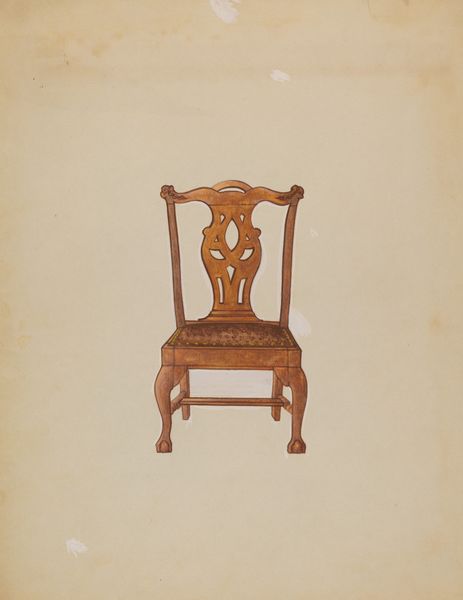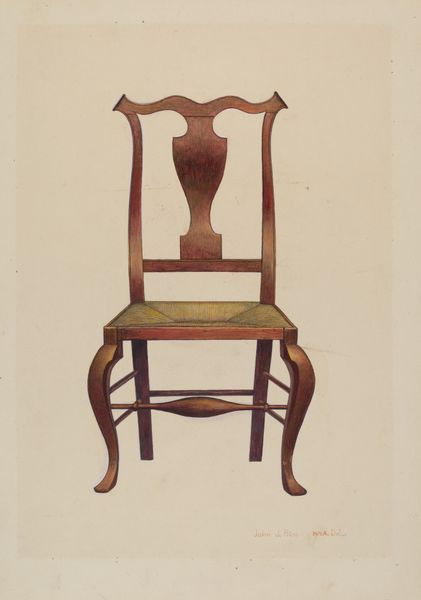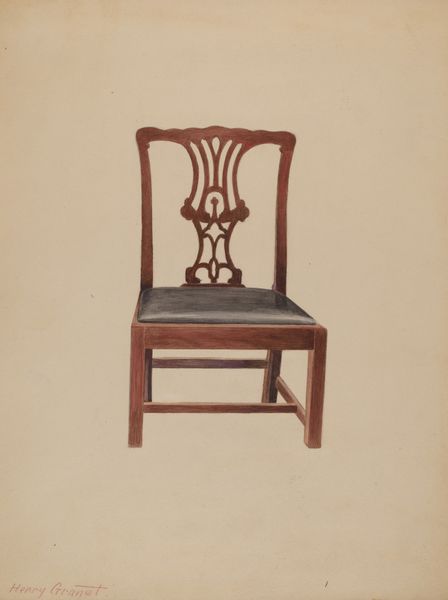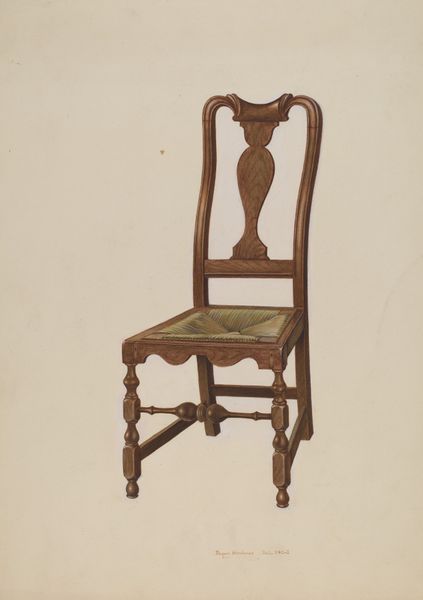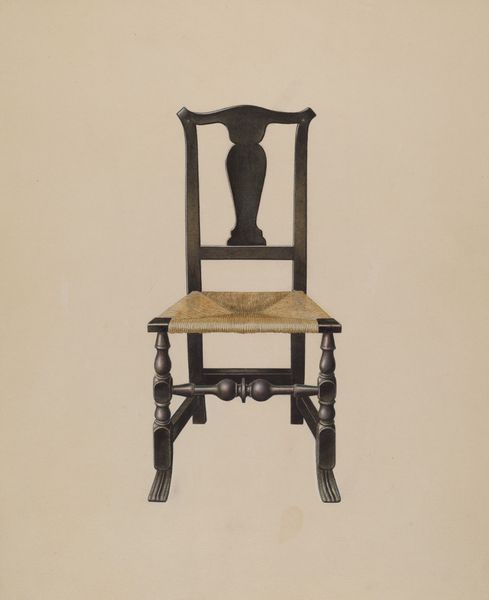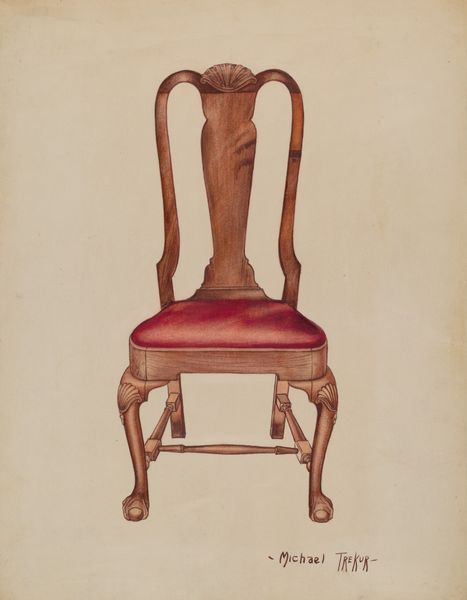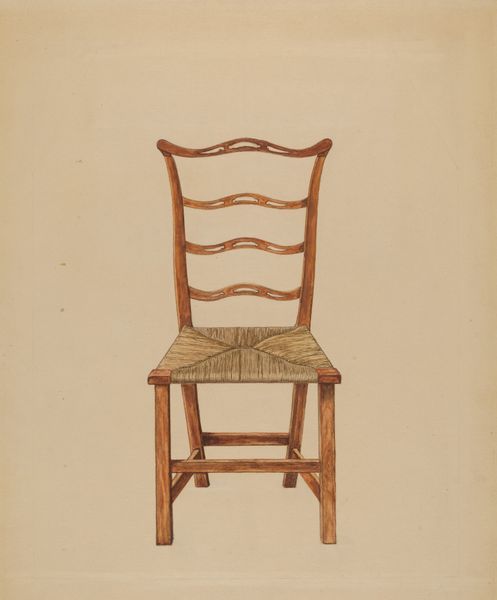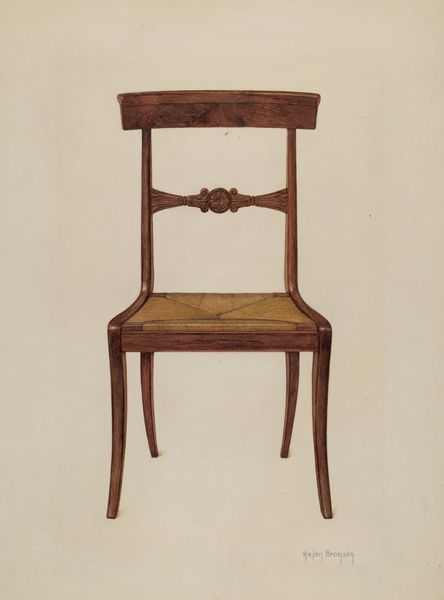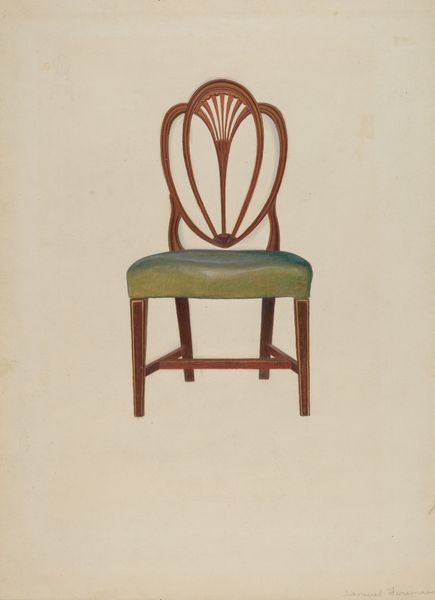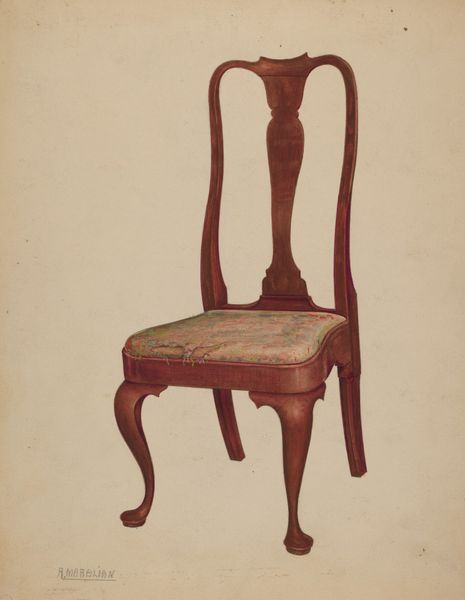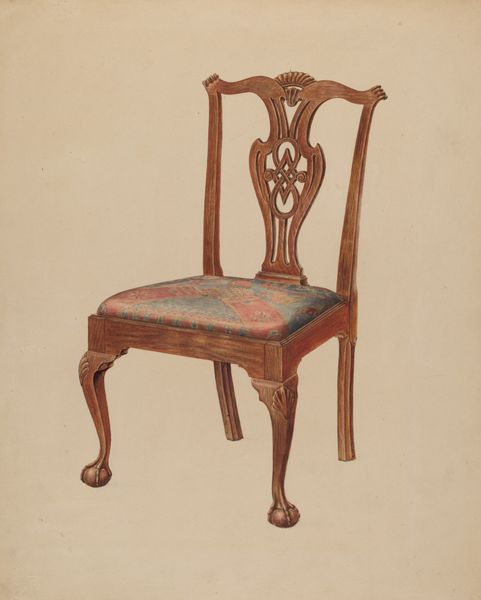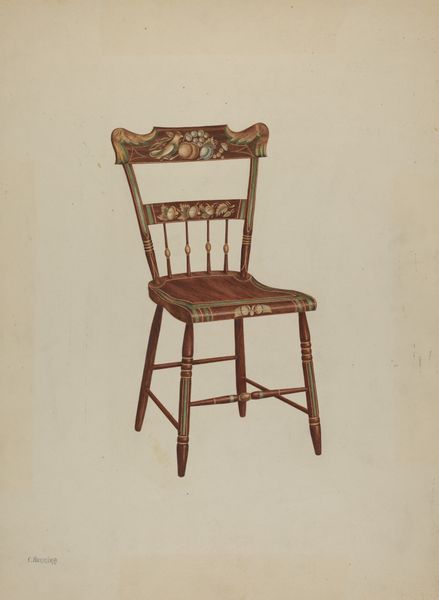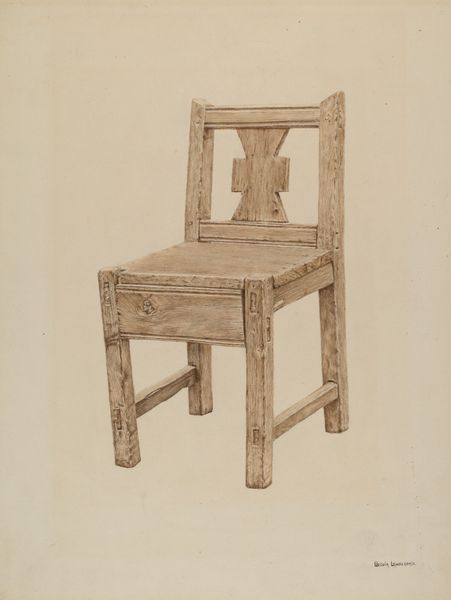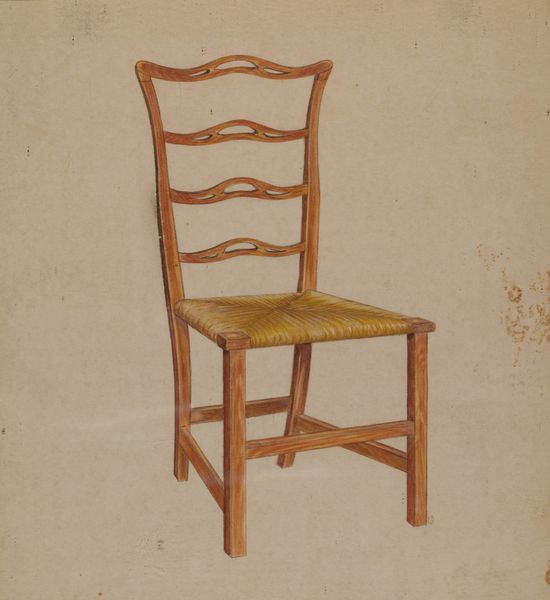
drawing, paper, watercolor
#
portrait
#
drawing
#
paper
#
watercolor
#
ceramic
#
academic-art
#
realism
Dimensions: overall: 37.1 x 28.4 cm (14 5/8 x 11 3/16 in.) Original IAD Object: none given
Copyright: National Gallery of Art: CC0 1.0
Editor: This watercolor drawing, simply titled "Chair" from around 1938, presents a solitary wooden chair. It's rendered with incredible detail. The choice of medium feels unexpectedly intimate for such a utilitarian object. What do you make of its depiction, especially considering its place in art history? Curator: It's fascinating how a mundane object can be elevated. Considering the social climate of the late 1930s, still reeling from the Depression, this drawing operates on several levels. On one hand, it’s a straightforward study of design and form, perhaps influenced by the Arts and Crafts movement’s emphasis on quality craftsmanship and honest materials. Yet, the solitude and stark presentation, devoid of context, speaks volumes. Is it merely a representation of functional design, or might it subtly evoke the emptiness of a home, perhaps one touched by the economic hardships of the era? Editor: That's a compelling idea! I hadn't thought about the emptiness. It's easy to just see the aesthetic. Curator: The lack of embellishment, the sheer functional quality of the chair… It’s almost as if the artist is stripping away the layers of excess and focusing on the core. It mirrors a broader societal concern with functionality and essentialism during that period, especially when institutions began commissioning art intended to offer social and economic critique. The New Deal programs fostered art meant for public consumption, art that speaks directly to the struggles of everyday Americans. Editor: So, it's a simple chair, but also so much more, hinting at the cultural anxieties of its time. Curator: Precisely! An object, yes, but one loaded with quiet socio-political undertones if you consider the artwork in its specific time. Editor: I'll definitely be looking at everyday objects differently now! Thanks for opening up a new way of viewing art. Curator: My pleasure. It's through these everyday glimpses we often best understand a culture's heart.
Comments
No comments
Be the first to comment and join the conversation on the ultimate creative platform.
